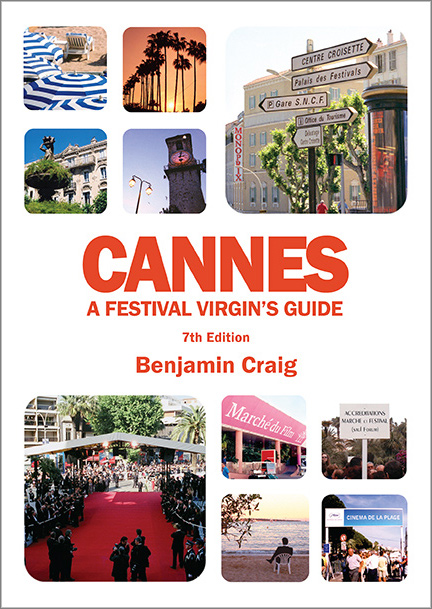
History of the Cannes Film Festival
Part 3: An Icon is Born
< Back to Part 2: And, Act... Wait, What?
The first involved an idea, initially floated by Parisian jeweller Suzanne Lazon, that the festival's award trophies should incorporate a palm motif, seeing as the trees had long become an icon of the city. The idea was picked up by Lazon's friend, legendary French director Jean Cocteau, who sketched out an initial concept. The design went down so well with the festival brass that for the 1955 festival the top prize, hitherto known as the Grand Prix, was renamed the Palme d'Or.
The second seismic change experienced in 1954 involved the introduction of 'sex' to the festival's image. During a photocall for American actor Robert Mitchum (one of the biggest stars of the day), largely unknown French starlet Simone Sylva inaugurated what would become an infamous tradition of posing topless on the beach for the cameras. A slightly-bemused Mitchum stood by as Ms Sylva's assets hit the international news wires, and with them a lasting image of Cannes was cast in the world's mind. This perception was only strengthened by photos of a bikini-clad Bridgette Bardot who, by the end of the 1950s, had become an almost permanent fixture on the beach during the festival.
Despite the headline-grabbing off-screen antics of its attendees, Cannes also continued to present a range of films from top international directors. Indeed, the 1950s selection saw a list of films from what started to look like a line-up of usual suspects as many Cannes alumni were invited back with their next films. Highlights included Fred Zinnemann's "From Here to Eternity", Walt Disney's "The Living Desert", Satyajit Ray's "Pather Pantchali" and "Parash Pathar", Federico Fellini's "Nights of Cabiria", Louis Malle's "Le Monde du Silence", Stanley Donen's "Funny Face", and a trio from Ingmar Bergman, "Smiles of a Summer Night", "The Seventh Seal", and "So Close to Life".
In those early days, Cannes was largely an event for tourists and socialites, people who were often more interested in attending the parties than watching the films. However, as the festival's popularity increased it also started to become a place for the international film industry to gather, do business, and discuss future projects. In 1959 the first marché du film (film market) was kicked off by 10 participants who, eager to show their films to potential buyers, set up a canvas screen on the roof of the Palais Croisette. The idea of using Cannes as a forum for film sales quickly gathered momentum, and by 1961, the market had become an official part of the festival.
The arrival of the 1960s brought with it large-scale social and economic changes in many western countries, but the festival was able to capitalise on the success of the previous decade and continue growing apace and pushing boundaries. 1965 saw the appointment of the first female jury president, Olivia de Havilland, and followed the next year by Sophia Loren. Films shown during the 60s festivals included Fellini's "La Dolce Vita", Buñuel's "Viridiana", John Frankenheimer's "All Fall Down", Sidney Lumet's "Long Day's Journey into Night", Robert Mulligan's "To Kill a Mockingbird", François Truffaut's "Le Peau Douce", Masaki Kobayashi's "Kwaidan", David Lean's "Doctor Zhivago", Orson Welles' "Chimes at Midnight", Michelangelo Antonioni's "Blow Up", Costa-Gavras' "Z", and Dennis Hopper's "Easy Rider".
 A full rundown on the 2026 Cannes Film Festival, is available in the book, Cannes - A Festival Virgin's Guide (7th Edition).
A full rundown on the 2026 Cannes Film Festival, is available in the book, Cannes - A Festival Virgin's Guide (7th Edition). Find Out More >
Continue reading... Part 4: Critics Welcome New Filmmakers, Old Directors Strike >